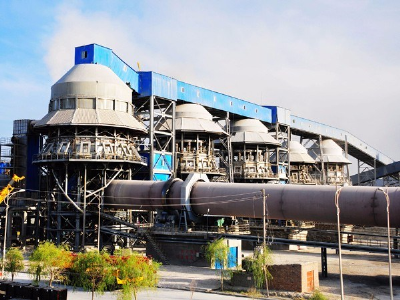Introduction:Having combined with AEE's extensive experience
in hazardous waste incineration and TSK's proven technology in
industrial furnaces, we have developed a new hazardous waste
incineration system. This system is a new generation of
environmental-friendly incineration system developed by using the
latest research results. Compared with traditional incineration
technology, this system can fully meet the stringent environmental
regulations in the future.According to different demands of
customers, we can provide three types of furnaces, which is slag
type, non-slag type and pyrolysis type.Technical performance
comparisons of three types of furnace Slag TypeNon-slag
TypePyrolysismaterial rangewide1widerelatively wide2
material status solid, liquid, gas solid, liquid,
gassolid, liquid, gas PCC
temperature1200-1450ºC850--900ºC500--700ºCSCC
temperature>1200ºC>1200ºC>1200ºC wearable material
lifespanshortlonglongResidence timeshortlongrelatively
longAuxiliary raw materialyesnonoAuxiliary fuelmorefewfewslag
burning ratelowrelatively lowhighslag treatment
no3yesyessmoke emissionhigh NOxlow NOxlow NOxoperating
costhighlowlowNotes:1 Suitable for handling high-toxic
wastes2 Suitable for handling organic wastes3 Can be used
as paving material after SPP processIncineration system:The rotary
kiln incineration system is ideal for handling industrial hazardous
wastes. It can handle not only solid, liquid and gaseous
hazardous waste, but also sludge. We can provide a whole set of
incineration equipment (including feeding system, rotary kiln,
secondary combustion chamber and slag discharge system), as well as
EPC services. We can formulate different flue gas treatment systems
according to different emission requirements to ensure that the
flue gas emissions comply with local environmental
regulations.• Feeding systemThe feeding
system is mainly used to quantitatively deliver wastes into the
rotary kiln and prevent smoke from overflowing. This system can
include: a solid waste feeder, a sludge and liquid pumping system,
and a gas injection system.• Rotary kilnThe
temperature in the rotary kiln is 850°C to 900 °C. After the
wastes enter the kiln, as the kiln rotates, the ash slag kiln is
continuously tumbling and burning, and then is discharged from the
end of kiln. The kiln speed, temperature and oxygen content can be
adjusted at any time according to the combustion conditions to
obtain the best incineration
effect.• Secondary combustion chamberThe
temperature in the secondary combustion chamber is greater than
1200ºC, and the flue gas discharged from the kiln stays in the
secondary combustion chamber for more than 2 seconds. Due to
sufficient oxygen and even mixing in the secondary combustion
chamber, dioxins and furans in the flue gas are completely
decomposed. (DREE≥99.9999%)• Waste heat
boilerWaste heat boilers are mainly used to recollect heat energy.
While reducing the temperature of the exhaust gas, steam can be
generated for use in the plant or used to generate
electricity.• Smoke handling systemThe smoke
handling system is mainly used to remove particulates, dioxins,
furans, acid gases and heavy metals from the flue gas. Its
configuration depends on the type of wastes being burned and the
requirements for flue gas emissions. The smoke handling system we
provide may include: quenching tower, dry humidification
deacidification reactor, activated carbon ejector, bag filter,
washing defogging tower, flue gas reheater, induced draft fan,
chimney, etc.• Emission continuous
monitoring systemThe content and transparency of CO, O2, CO2, SOX,
NOX, HCl in the flue gas emitted by the incineration system can be
monitored in real time.Process system controlThe operation of the
entire incineration system depends on the coordination work of all
equipments within the system. We start with the waste to be treated
and then optimize the entire system through a dedicated
heat-material balance program. We use a PLC-based control system
throughout the incineration system that integrates equipment
monitoring, safety interlocking, intelligent control and
operational logging. The control system has a user-friendly
interface that allows the operator to visually monitor and operate
the entire incineration system. During the process, the composition
and treatment volume of the waste are constantly changing, which
brings great difficulties to the stable operation of the entire
incineration system. We can provide an intelligent expert system
for automatic control of the entire incineration system.
graphical control
interface(GUI)Technical Advantages:1.
Strong material adaptabilityThis system can handle a variety of
solid, liquid, gaseous wastes and sludge, and barreled wastes can
also be sent directly to the kiln for incineration. It can adapt to
various wastes with a calorific value of 3 to 45
mJ/kg.2. Clean smoke gas emissionThis
system has taken the world's most stringent
Related products about Hazardous Wastes Incineration Rotary Kiln
-
 Waste Tyre Plastic Recycling Machinery Machine Tire Crusher Production Line Rubber Crumb Grinding Machine Equipment Tire Shredder
Waste Tyre Plastic Recycling Machinery Machine Tire Crusher Production Line Rubber Crumb Grinding Machine Equipment Tire Shredder
-
 Stretch Plastic Blowing Pet Bottle Making Blow Molding Machine Bottles Stretch Automatic Pet Bottle Blowing Machine
Stretch Plastic Blowing Pet Bottle Making Blow Molding Machine Bottles Stretch Automatic Pet Bottle Blowing Machine
-
 Waste Plastic Pet Bottle, Water Bottle Flake, PP/HDPE/LDPE PE Film Jumbo Woven Bags Plastic Crusher Machine, Plastic Crushing Washing Recycling Machine
Waste Plastic Pet Bottle, Water Bottle Flake, PP/HDPE/LDPE PE Film Jumbo Woven Bags Plastic Crusher Machine, Plastic Crushing Washing Recycling Machine
-
 Type 2 Wall-Mounted Electric Car Charging Station 7kw /11 Kwelectric Vehicle Charging Station Home Wallbox AC EV Charger Single Phase or 3three Phase
Type 2 Wall-Mounted Electric Car Charging Station 7kw /11 Kwelectric Vehicle Charging Station Home Wallbox AC EV Charger Single Phase or 3three Phase
-
 G-View G12W Wholesale Auto Car LED Headlight Bulb High Power H13 H11 9005 H7 H4 Car LED Headlights LED Car Lights
G-View G12W Wholesale Auto Car LED Headlight Bulb High Power H13 H11 9005 H7 H4 Car LED Headlights LED Car Lights
-
 New Design Porcelain Round Plates Dinner Set for Wedding and Banquet
New Design Porcelain Round Plates Dinner Set for Wedding and Banquet
-
 China 2023 New Design Super Soft 100% Polyester Microfiber Knitted Oversized Decoration Hoodie Blanket
China 2023 New Design Super Soft 100% Polyester Microfiber Knitted Oversized Decoration Hoodie Blanket
-
 Handmade Art Creative Materials Thickened White Paper Cup DIY Disposable Handmade Colored Paper Cup
Handmade Art Creative Materials Thickened White Paper Cup DIY Disposable Handmade Colored Paper Cup






